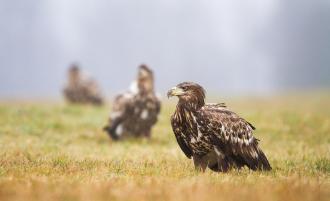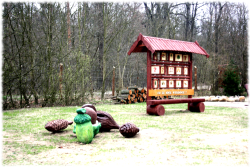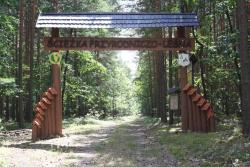Forest resources
Silviculture

Forest protection
Forest use
Forest management
Hunting
 Asset Publisher
Asset Publisher
 Asset Publisher
Asset Publisher
EDUCATIONAL OBJECTS
EDUCATIONAL OBJECTS
 Tablica edukacyjna /fot. Joanna Rogala
Tablica edukacyjna /fot. Joanna Rogala
 Ścieżka przyrodniczo - leśna Dzikowo /fot. Joanna Rogala
Ścieżka przyrodniczo - leśna Dzikowo /fot. Joanna Rogala
 Fot. Andrzej Nowacki
Fot. Andrzej Nowacki
 Obiekty edukacyjne, fot. Bogdan Pastyrczyk
Obiekty edukacyjne, fot. Bogdan Pastyrczyk
Gubin Forest District runs an array of activities connected with forest education.
For educational purposes, the Forest District uses field structures such as:
● forest and education trail in Dzikowo,
● mini-arboretum habitat at the headquarters of the Forest District,
● forest nursery,
● Eco Education Building "Sosna Gubińska" (Gubin Pine),
● selection and seed production objects of "Sosna Gubińska"
Eco Education Building "Sosna Gubińska" in Dzikowo
Eco Education Building "Sosna Gubińska" is a perfect place for exploration of knowledge of forest and nature. The lecture hall is equipped not only with traditional didactic help such as books, magazines, display cabinets with materials on forest management, pictures, and photographs, but also one of the most innovative audiovisual equipments - an interactive touch screen monitor. The 70'' board allows for screening of films with active participation of the audience. Custom software for nature education gives the opportunity to perform interactive tasks, activating more senses in the learning process of students attending such interactive lessons. Thanks to that learning becomes more effective and at the same time brings a lot of fun. Furthermore, the surrounding area of "Sosna Gubińska" is great for field classes - there is a forest and education trail "Dzikowo" and a bonfire spot nearby.
Forest and education trail "Dzikowo"
Forest and education trail "Dzikowo" begins and ends in the village of Dzikowo, 8 kilometres from Gubin. In total, the trail encompasses 22 themed stops equipped with numerous educational boards and exhibits.
The trail begins at the "Leśne przedszkole" (Forest kindergarten) stop, where a symbolic oak has been planted. The next is the "Mrówki w lesie" (Ants in the forest) stop, followed by "Ochrona lasu przed szkodliwymi owadami" (Protecting the forest against harmful insects). It is at this spot that one can learn about the pests living in the forests of the Gubin Forest District. Further, the route leads to "Słupek oddziałowy" (Marker post) and to "Krajobraz po huraganie" (Landscape after a hurricane), where on 8 July 2004 a powerful hurricane caused disastrous damages to the forests of the Forest District. The next stops are: "Ptasi budzik" (Bird alarm clock), "Plantacja choinkowa" (Christmas tree plantation), "Piętrowa budowa lasu" (The layers of the forest) and "Ochrona pożytecznej fauny" (Protection of useful fauna). The stop no. 10 is called "System ochrony przeciwpożarowej" (Fire protection system) because of the 36-metre high forest fire lookout located there. The tower is an important element of protection of the forest areas against fires. The next stop on the trail contains information on flora and fauna of the area. The last stop is dedicated to the soldiers who had died in the times of war. At this spot, one can see a boulder form the times of WWI and right next to it an old oak with the status of a natural monument.










